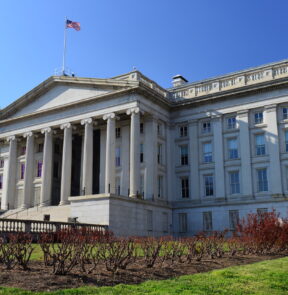For investors, climate change presents a critical challenge, owing to its significant impact on the environment as well as the economy. Since 1880, average global temperatures have risen by about 1 degree Celsius, or 1.7 degrees Fahrenheit.1 Temperatures are projected to continue to climb, reaching approximately 1.5 degrees Celsius above the 1880 level by 2050 and 2-4 degrees Celsius by 2100.
Global warming brings unprecedented risks with severe physical and economic implications. As temperatures tick higher, the frequency and intensity of extreme weather events are expected to increase, resulting in substantial costs to property and infrastructure, while disrupting supply chains and overall economic stability. Understanding and mitigating these risks is essential for investors aiming to navigate security selection in this evolving landscape.
The Risks of Climate Change
Between 1980 and 2024, the total cost of 378 extreme weather events surpassed $2.7 trillion, with events in just the last seven years exceeding $1.1 trillion.2 If these trends continue, annual fiscal losses could balloon to between $1.7 trillion and $3 trillion by 2050. Whether these forecasts are too aggressive or not, the macro-economic costs aren’t the only factors investors must heed. Climate change is transforming business practices, consumer behaviors, asset values, and strategic risks, thereby impacting the long-term success and profitability of the companies in which they invest.
The risks associated with climate change can be broadly shaped into two categories: physical risks and transition risks.
Physical Risks: These include potential costs associated with climate or extreme weather events—such as wildfires, storms, and floods—which pose substantial dangers to property, infrastructure, and land. In 2023 alone, there were 28 separate billion-dollar weather and climate disaster events, resulting in a staggering $93 billion in repair costs.3 Beyond that, increased insurance costs due to a higher frequency of natural disasters, lower valuations on business assets threatened by the long-term effects of rising sea levels and wildfires, and higher prices for consumers due to reduced crop yields are only a few examples of financial stressors that can arise from a warming climate.
There can also be significant financial pressures on both governments and individuals to repair damages to housing and infrastructure from climate-related disasters. On the corporate side, bottom lines can be impacted by unforeseen costs associated with repairing damaged infrastructure, struggling supply chain operations, and additional costs and disruptions faced when delivering goods and services.
Transition Risks: Unlike physical risks, transition risks stem from policy actions taken to shift the economy from fossil fuels toward low-carbon alternatives, creating winners and losers within and across industries. Businesses may face higher carbon emission taxes or increased spending to reduce their emissions in compliance with new policies. And as initiatives requiring greater sustainability take hold, consumer and corporate preferences can also shift toward greener products and practices, creating further risks for companies that aren’t nimble enough to adapt to the changing landscape.
Mitigating Climate Change: Investment Considerations
Despite the significant risks that climate change presents, there are also substantial considerations for investors.
Sectors such as renewable energy, electric vehicles (EVs), and green infrastructure are all expected to experience significant growth in the near future. These trends are accompanied by the increasing need for climate-resilient real estate and the financing of low-carbon technologies. Investments in the global clean energy supply chain—including equipment factories and battery metals production for energy technologies—reached a record $135 billion in 2023.4 This figure is expected to rise to nearly $260 billion by 2025. As the world transitions to a low-carbon economy, these sectors offer potential considerations for investors seeking to capitalize on the shift towards sustainable and resilient infrastructure.
The topic of climate change will also continue to play a key role in the 2024 presidential election. While surveys indicate that more voters are likely to support a candidate who supports action on global warming,5 the outcome of the election has the power to shift the sentiment surrounding decarbonization and the country’s climate policy.
Yet investors should not simply assume a Trump victory would be better for traditional oil & gas companies while a Biden re-election would benefit businesses leading the energy transition. These widely held views rarely play out as investors assume, in large part because government policies are only one of a myriad of forces affecting the market. Since the start of the Biden Administration on Jan. 20, 2021, for instance, shares of oil & gas companies have returned more than 146%, compared with the modest 37% rise in the S&P 500, as global demand for energy grew emerging from the Covid shutdowns.6 Meanwhile, during the Trump Administration, sustainable energy stocks in the S&P Global Clean Energy Index soared more than 277% in the early stages of the ESG push during the demand shock caused by the pandemic.
Regardless of the results of the pending election, investors should expect higher volatility in the coming years, especially as strategies and technologies to combat climate change emerge and the market struggles to properly value companies against the backdrop of climbing temperatures.
Having a trusted financial advisor can help you establish confidence in your investment decisions amid this period of uncertainty. If you would like to discuss these considerations or potential opportunities, please reach out to Sid Queler at squeler@fiduciary-trust.com.
1 Intergovernmental Panel on Climate Change
2 National Centers for Environmental Information




